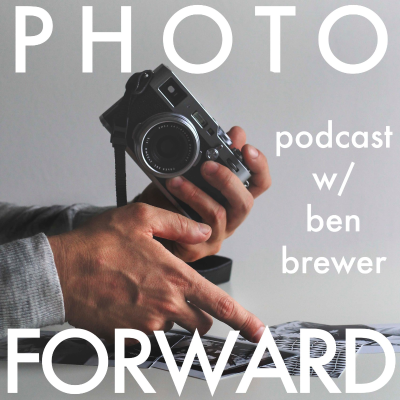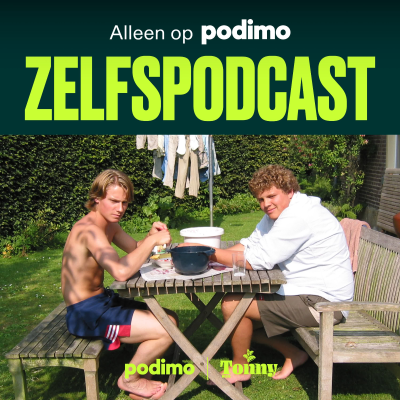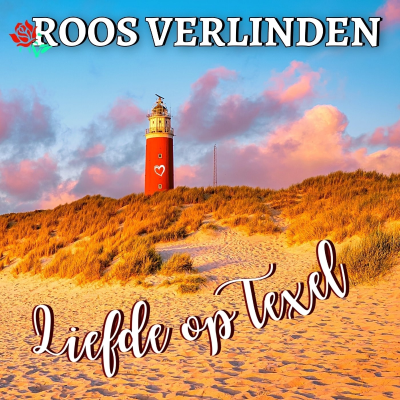
Photo Forward
Engels
Cultuur & Vrije Tijd
Tijdelijke aanbieding
3 maanden voor € 1
Daarna € 9,99 / maandElk moment opzegbaar.
- 20 uur luisterboeken / maand
- Podcasts die je alleen op Podimo hoort
- Gratis podcasts
Over Photo Forward
The Photo Forward Podcast explores the stories BEHIND some of the greatest visual storytellers in the world. From their photographic origins, to finding work-life balance as creative professionals, to how to actually make a living as a photographer, videographer, or multimedia creator — we uncover what makes them tick and their shutters click.
Alle afleveringen
30 afleveringen#031: Photography in a State of Wonder | Brian Peterson
When is the last time you, as a photographer, had a picture make itself in front of you? I know that sounds a little bit philosophical, but stay with me, it’s way more practical than you might think. I’m talking about the level of work and care that go into creating a photograph before the shutter ever clicks – Researching your location before you arrive to know the environs, determining the impact what time of day it is and how that shapes your image, just walking around in the space (with or without the subject of the photograph) to just take in the possible composition options. And then, after all of that, having the dedicated patience to just simply wait for the right decisive moment, peak action, or perfect emotion in the person you’re photographing to create that image (that might take hours of not-taking photos to capture that one ideal moment). That level of dedication to the craft is exactly what we’re talking about today with legendary Minnesota photojournalist Brian Peterson. Brian Peterson was born in Duluth, Minnesota, and has enjoyed a 35-year career as a photojournalist covering stories he cares most about in his home state of Minnesota and around the world. He's best known for his work since 1987 for the Minneapolis Star Tribune, but his photographs have also been published in National Geographic, Sports Illustrated, and the New York Times. Brian has been honored nine times as Minnesota News Photographer of the Year and has been recognized nationally and internationally for his documentary photojournalism, including a Robert F. Kennedy Award, NPPA's Canon Photo Essay Award, and three regional Emmys for his video work. He has photographed the Winter and Summer Olympic Games five times and his sports photography has been honored by the national baseball and football Halls of Fame and the National Press Photographers Association. Peterson is the author of two books, Minnesota State of Wonders (www.stateofwonders.com) and “Voices for the Land”, and the winner of three Minnesota Book Awards. www.brianmarkpeterson.com In today’s episode with Brian Peterson, we touch on the importance of connecting with your environment (on and off assignment), changes he’s experienced in the newspaper photography industry over the past three decades, and why so often the time we spend not taking photos with the people around us can lead to the greatest images in the long run.
#029: The Art of Visual Style | William DeShazer
When you’re scrolling through Instagram, what makes you stop? For some folks, it might be eye-catching colors, for others it’s unique locales or engaging video. For me and for a lot of other people out there, the answer to that is simply this – Style. Visual Style. You see a creator’s work on the platform, like the photo/project, enough so that you swipe over to their profile page and it All. Just. Clicks. It’s like you can experience their personality, their humanity itself seeping through the screen in every image, video, or story they’re posting. Whether it’s a high school sports match or an in-depth documentary project, the work FEELS like it was all created consistently and has the same heart behind it. That versatility to create across genres combined with a creative consistency can be the holy grail for editorial photographers and today’s guest exemplifies that. William Deshazer an editorial and commercial photographer based out of Nashville, TN. He's a regular contributor to The New York Times, The Washington Post, and The Wall Street Journal. He worked in newspapers for 12 years before going out on his own and held staff positions at the Concord Monitor, The Commercial Appeal, and the Chicago Tribune. He grew up in Louisville, KY and it will always be his home. Because of that he's partial to bourbon, horses, and baseball bats. When not working he enjoys exploring Nashville with his wife, playing the guitar, buying records, or planning my next big trip. Some of his wealth of Clients include: AARP, Best Buy, The Boston Globe, CNN, Hyatt Hotels, European Pressphoto Agency, ESPN Magazine, Los Angeles Times, Louisville Magazine, Maker's Mark, NPR, O, The Oprah Magazine, The New York Times, Runner's World Magazine, St. Jude Children's Research Hospital, TripAdvisor, The Wall Street Journal, The Washington Post,
#027: Getting Down to Business | BP Miller
Does it feel like you’re creating and producing content at a fevered pitch, but never quite getting a stable pool of clients or like you’re constantly re-inventing the wheel of your photography or videography business? Well, that means it’s probably time to get back to the fundamentals in today’s masterclass on making your photography business hum with our guest, BP Miller. BP Miller is a founding partner and senior photojournalist at Chorus Photography. Founded in 2007, Chorus has gone from a single shooter operation in Philadelphia to establishing studios on both coasts, with a roster of impressive clientele, including The Drug Information Association, Beasley Broadcasting, Habitat For Humanity, and many others. BP Miller is an award winning photographer, photojournalist and speaker whose work has been curated by The Smithsonian’s National Museum of American History, and published in numerous publications like The Philadelphia Inquirer, The Philadelphia Daily News, Washington Post, Rolling Stone & The New York Times. BP is an active member of RTDNA (Radio, Television & Digital News Association), an Edward R. Murrow Awards Judge, former Mid-Atlantic Chair of the National Press Photographers Association and a former board member of the Northern Short Course In Photojournalism. He can be found speaking across the country about non-profit photography as well as photojournalists' rights. In today’s episode, BP and I dig in deep on what it means to be a photographer with integrity for your work, impressing upon your clients the value of the photos and videos that you create, and taking time for your own mental health as a visual storyteller. There is so much gold in this episode, all delivered with BP’s unique perspective on our industry and his telltale voice and humor.
#025: Pivoting Your Work to Find Your Worth | Paul Gero
Have you ever stepped back in your career, whether you’re a visual creator or not, and thought, “Well, shit… is this it? Is this really as good as it gets? Is this what I want to be doing for the next X years of my life?” Don’t worry, that’s a positive thing (despite however dark night of the soul it may feel like in the moment) And, you are definitely not the only one feeling that way. In the business and corporate world, (yes I know a lot of you will bristle at the very mention of that word, but here me out) there’s a really common expression or phrase that so encapsulates today’s episode – “When you get to the top of the ladder you may find it is propped against the wrong wall.” Today’s episode is all about examining your ladder and things aren’t feeling right, knowing how to jump to the right ladder to take you to the top. Paul Gero is a portrait and wedding photographer and has been working professionally for over 35 years. Prior to creating a portrait and wedding business he was a photojournalist for two major metropolitan newspapers (The Chicago Tribune and The Arizona Republic) and photographed thousands of assignments from pro sports, business portraits, documentary stories to general assignment work. His images have been published in magazines around the world during his career. He has been a Sony Artisan of Imagery since 2014 and speaks often about Sony mirrorless cameras at professional gatherings. He and his wife Nicki run their business from their home base in Lake Mills, WI (his home state) after nearly 17 years in Southern California while raising their two children Kate and Sparky. Documenting their lives is his favorite and most personal photography project. In today’s wide-ranging and beautifully encompassing episode, Paul and I explore his photographic career and transition from staff photojournalist to freelance business owner, how moving from California to Wisconsin taught him about the power of truly local visual storytelling, what mistakes younger photographers are constantly making, and how he created a beautifully simple execution of a personal project safely in the midst of a global pandemic.
#024: Plus, Minus and Equals of Growth and Connection
So, this is an episode I’ve been wanting to share for such a long time. Like seriously probably a solid year when I heard about this concept for interpersonal connections and growth that clicked in such a profound way for me when I was able to tie it back to places in time of my own creative journey. Alright, so what is this Plus, Minus, Equals concept and why does it matter? Put simply, a key way to ensure you’re growing in your career (or really ANY area of your life you could apply this principle to) is deliberately creating connections with people way ABOVE your level, way BELOW your level, and RIGHT AROUND your level of (insert skill or proficiency here). You might hear all that and think, “Well, duh? Of course you want to have a variety of folks in your circle”. Well, obviously yes, but think RIGHT NOW to your closest connections in a particular space (say your department, one of your hobbies/passions outside the office, or even just close friends). And tell me honestly how many of those circles truly contain a variety of skill levels? Chances are pretty slim that’s a damn near homogenous group. If you’re one of the many photographers listening to this episode, for example, do you really have any newbies or photo students in your close contacts? Or vice versa, how many world-class, awarded photographers could you honestly say is a connection you could call upon? If you have trouble answering either of those questions, trust me, you are so far from the only one. As we settle into our careers (creative disciplines, media or otherwise) we aggressively run the risk of our networks and connections becoming calcified into “people like me” who “think and do things like I think and do” (The brilliant marketing mind Seth Godin has a word for that – CULTURE) Okay, I say that a bit tongue in cheek, but it’s true. The farther along in our career and and personal lives we get, we fall into ruts of what we do and who we spend time with the most (not all in a bad way, but far more often and even a little insidiously, in a mindless, unintentional way). So, let’s break down the three elements of the Plus, Minus, Equal philosophy of connections and how it can make such a difference in your own growth and development. PLUS: While the word gets bandied about way too damn much for anyone’s liking and has nearly lost the gravity and importance that it used to have, PLUS in this model of connection and growth is really referring to the concept of Mentorship – or at the very least, learning from individuals in your field who have objectively created and achieved more than where you’re currently at (no shade here, it’s just a fact that you’re always going to be outpaced and outachieved by plenty of people. Just the same way you’ll outpace and out achieve plenty of folks in turn, but more on that later). In my mind, the key benefit of connecting and communicating with folks above your weightclass as it were in your field or in the particular skill you’re looking to grow in is this: hard learned lessons minus the struggle. As the old saying goes : “Only a fool learns from their own mistakes. A wise man learns from the mistakes of others”. Now there’s nothing quite like the teacher that is failure/struggle/pain/etc., but connection with an advanced figure in your field is a damn close second. And more often than not, can help you illuminate the “unknown unknowns” and pitfalls one couldn’t possibly see coming. The trite analogy would be the idea of summiting Mount Everest. Instead of learning lessons yourself (cough, frostbite, cough), wouldn’t you rather start on a solid foundation of learning from those who had come before in place of reinventing the wheel so to speak. Realistically however, each of these kinds of connection do come with a handful of pitfalls and the PLUS category of individuals can be one of the most sneakily detrimental to growth if you’re not careful. 1. Put simply, you’re going to get rejected, shot down, and ignored by folks farther along in career or skill level. A LOT. And there’s nothing inherently wrong with that (they’re leading busy, accomplished lives and most won’t have the time to connect on a cold email/phonecall with a junior person they may never have met). On top of that, if you as the reacher-outer don’t approach it in the right way, you’re going to set off all kinds of alarms in the mind and inbox of the PLUS you’re trying to connect with – Hot take, if you use the word “mentor” or “mentorship” explicitly or throw out a phrase like “pick your brain”, you’re going to have a BAD TIME. 2. Second, another pitfall of connecting with PLUS folks is objectivity. And what I mean by objectivity is this – The tendency in all sorts of industries or skills is to view the folks at the proverbial “mountaintop” as larger than life. As such, the real thing to avoid is any and all kinds of HERO WORSHIP. You can see through that kind of insincerity a mile away. If the kind of person you’re reaching out to needs you to butter them up to build a rapport and to open the door to learn from them, they are NOT the kind of person you want to learn and grow from. We’re all multifaceted beings and to distill them down to the pinnacle of their career or skill is not only super reductive to them as an individual, but once you lose that objectivity, how are you going to be able to think critically about the lessons and insights you might get? So where do you go from there with the PLUS folks on your connection quest? Make a list of 20 people in your industry or skill that you would want to connect with and, for each, nail down EXACTLY what the scope of that learning would be – specific and relevant enough that they’ll be able to understand why you reached out to them in particular. Better yet, do you have any mutual connections who might be able to reach out and make a no-pressure introduction [https://www.jordanharbinger.com/intro/]? From there, if you’re fortunate enough for one or two folks to respond, you can try to build that relationship OVER TIME. (and just as a cheeky aside, there’s a really big part of the photo forward podcast that grew out of a need for more PLUS folks in my circles through interviewing brilliant visual creators, through the magic of technology, all around the globe that I may never have the chance to meet in person) MINUS: Alright, now that we’ve cleared out the hero worship and fawning over the greats, let’s move on to what I think is arguably the most important group to build connections with – the MINUS folks. Like I mentioned on the PLUS group, there’s nothing inherently negative or problematic with talking about a MINUS population who aren’t as skilled or far along as you. Just facts. So why would you want to grow connections with those who are objectively less skilled than you? In my mind, the true benefit of building these kinds of cross-skilled relationships is both a little counterintuitive, but super obvious when you spell it out. TEACHING (or as it’s been coined referring to teaching folks only slightly behind where you are “The Protege effect”. One of the most brilliantly simple and effective quotes that typifies this is the old (possibly) Albert Einstein adage “If you can't explain it simply, you don't understand it well enough.” What makes a teacher a teacher is their ability to understand complex topics in such detail and with such alacrity that they can translate that domain-specific knowledge into lectures with students who know relatively far less. And not bore them to tears in the process. Once you yourself cease to be in the group of complete newbies on a topic or in a career field, you really do owe it to the world to give back to the collective knowledge and growth of the “next generation” in your area. I wouldn’t be anywhere close to the achievements I’ve gotten without learning from those above me, so to actively neglect that to those less far along than you is hard to describe as anything less than unwise (if you’re being generous) or (let’s call a fucking spade a spade) selfish and gatekeeping. So what could possibly go wrong with getting a deep understanding of your skills and teaching the up-and-comers? Well, in my mind, there’s really only one potential downside to over-indexing in the MINUS group of folks for connection and growth. It’s definitely possible to extend yourself too far in this direction and end up spending a disproportionate amount of time being the PLUS for new folks in your field that you end up not keeping pace with the EQUALS or learning your own lessons. If you’re constantly teaching, your’re probably not spending enough time building your own experience and run the risk of stagnating a bit in your own endeavors. Now when we get to action steps, this can be a bit trickier because so many of these interactions require a bit more serendipity and responding to MINUS folks that reach out to you personally. But it doesn’t have to be quite so passive! How you might ask can you manifest these connections into existence? This is where the beauty of Web 2.0 comes into play. If you have a lesson to share, there’s pretty much an unlimited number of ways to get that out into the world through blogs, LinkedIn posts or *wink wink* just start a podcast and put out episodes like this. And more than anything, don’t feel like you have to be a know it all to know enough to teach – You don’t have to have read the entire book, you just need to be a chapter ahead of the students. EQUALS: Last but certainly not least we’re left with the final group in this connection and growth concept – the one we always think of first when you think of networking and skillbuilding your EQUALS. While it’s kind of a duhh section to include in the episode (“Yeah Ben, real fuggin insightful to suggest that you should CONNECT with people who are CLOSE in skill level to you. Eye Roll.”). But stay with me here. I think there’s gotta be particular reasons WHY you’re collaborating with and with WHOM you’re working with to make these EQUALS connections actually valuable. From my experience over the last decade as a photographer and cinematographer, I think when it comes down to it, there are three big factors that transform a good EQUALS connection to a great one – Aligned Values, Productive Collaboration, and Candid Communication (oddly enough, as I write this out it’s really hard not to super impose these onto what it takes to make a healthy and successful romantic relationship or partnership. *accidental mind blown* Now, your EQUALS connections don’t have to have all three of these characteristics or even excel in a single one of these (there are tons of people and connections that are extremely valuable without needing to “optimize” your growth and development to death and prune out people that don’t hit these themes). But I’ve found that a mindful approach to who you’re close with and defining why you’re close with them (think Napoleon Hill: “You are the average of the five people you spend the most time with”). Speaking specifically in the field of photography/visual media, finding people with Aligned Values ensures you’ve got a shared language for your work and similar motivations and goals that you’re reaching towards. EQUALS folks that you can actually have Productive Collaboration with ensures that you can sustain working together over days/weeks/and months together and not just falling into the trap of the creative jerk-off that can be talking about projects and bouncing ideas off of each other and not actually MAKING ANYTHING and taking it to the next level of growth. And deeply connected to that, if you can’t really, and I do mean REALLY, honestly share your input, ideas, and world with an EQUALS connection, you don’t actually have one. If you feel like you can only be real with them if it’s what they want to hear or you’re only giving them positive feedback on their work, change that shit quickly. You shouldn’t feel like you need to cut them out of your life entirely, but there does need to be a “come to jesus moment” where you get real with each other and come up with a plan to fix that. (Or maybe you notice that you’re the one who’s only getting positive feedback and praise from your EQUALS and YOU need to have your own wake-up call and reflect on why that is). As the great executive coach Jerry Colonna breaks it down: “How am I complicit in the creation of the conditions in my life, that I claim to not want.” Again this is sort of a category I don’t need to beat a dead horse on when it comes to identifying practical next steps for you the listener to grow your EQUALS group. Honestly, like I mentioned before, it’s almost more about building (and then pruning) your existing connections to deliver the desired outcomes, creative collaboration, growth and problem-solving you want. So with all of the demands on your time in our busy world, when you think about creating the connections and relationships to grow, just remember: Find your PLUSSES, Teach your MINUSES and collaborate with your EQUALS.
Kies je abonnement
Tijdelijke aanbieding
Premium
20 uur aan luisterboeken
Podcasts die je alleen op Podimo hoort
Gratis podcasts
Elk moment opzegbaar
3 maanden voor € 1
Daarna € 9,99 / maand
Premium Plus
Onbeperkt luisterboeken
Podcasts die je alleen op Podimo hoort
Gratis podcasts
Elk moment opzegbaar
Probeer 30 dagen gratis
Daarna € 11,99 / maand
3 maanden voor € 1. Daarna € 9,99 / maand. Elk moment opzegbaar.

































